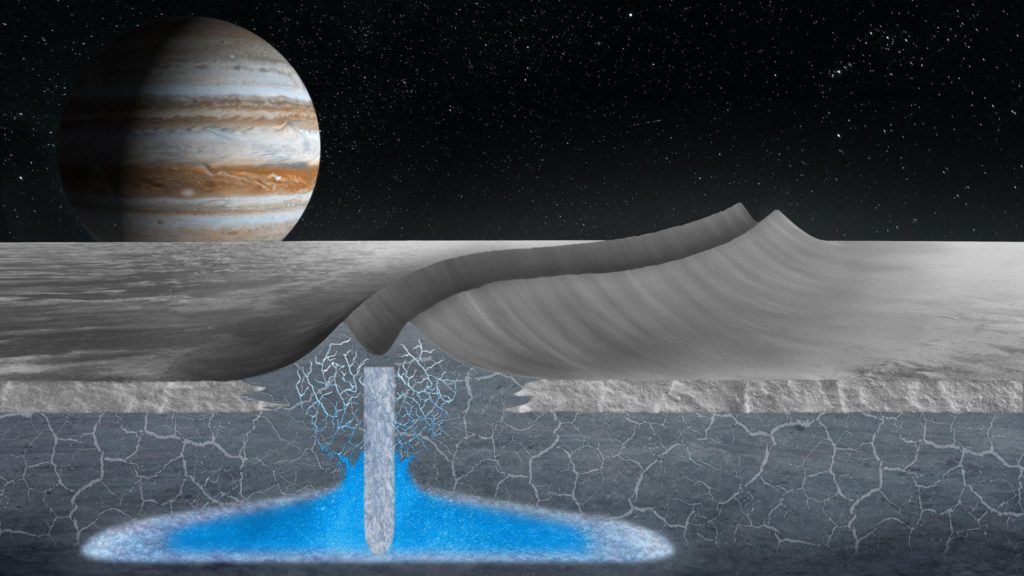This artist’s conception shows how double ridges on the surface of Jupiter’s icy moon Europa may form over shallow, refreezing water pockets within the ice shell.
Increasing evidence suggests that the ice shell is more of a dynamic system than a barrier – and an astrobiology site with potential habitability in its own right.
Ice-penetrating radar observations that captured the formation of a “double ridge” feature in Greenland suggest that the ice shell of Europa may have an abundance of water pockets beneath similar features that are common on the surface.
On Earth, researchers analyze polar regions using airborne geophysical instruments to understand how the growth and retreat of ice sheets might impact sea-level rise.
Double ridges on Europa appear as dramatic gashes across the moon’s icy surface, with crests reaching nearly 1000 feet, separated by valleys about a half-mile wide.
Europa is the smallest of Jupiter’s four Galilean moons, and the sixth-closest to the planet of all the 80 known moons of Jupiter.
Rather than behaving like a block of inert ice, the shell of Europa seems to undergo a variety of geological and hydrological processes – an idea supported by this study and others, including evidence of water plumes that erupt to the surface.
